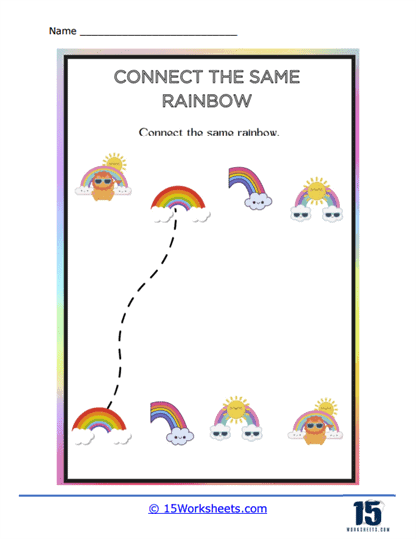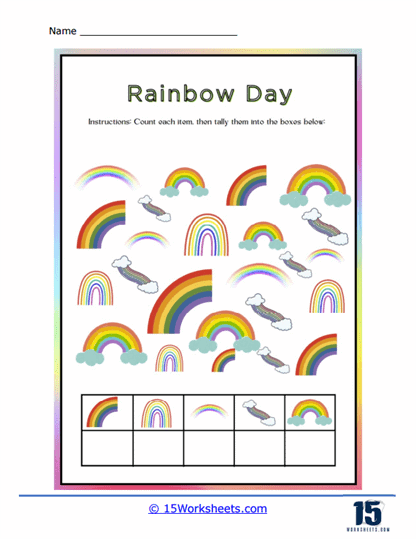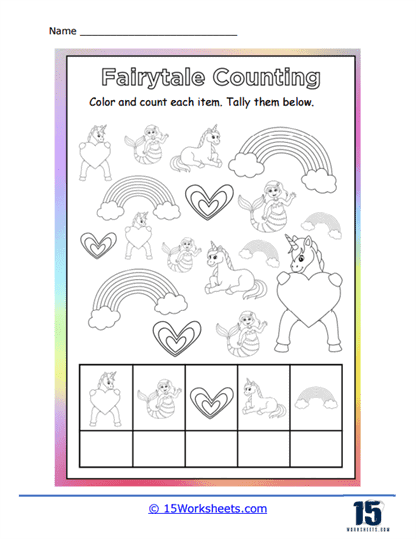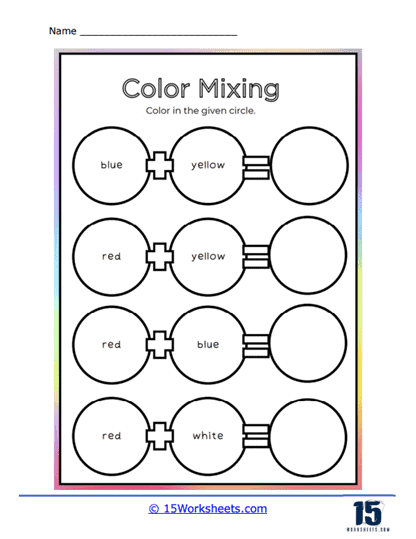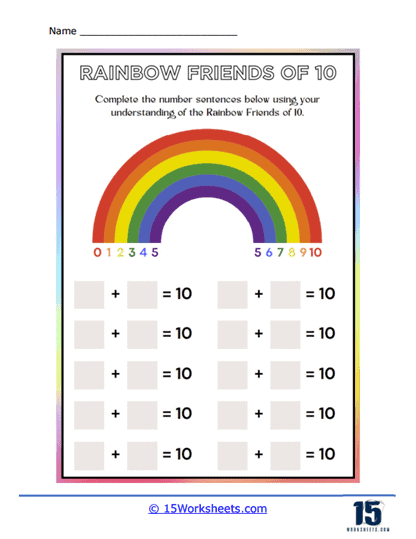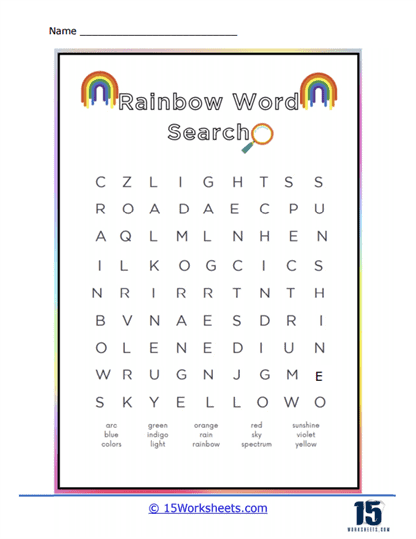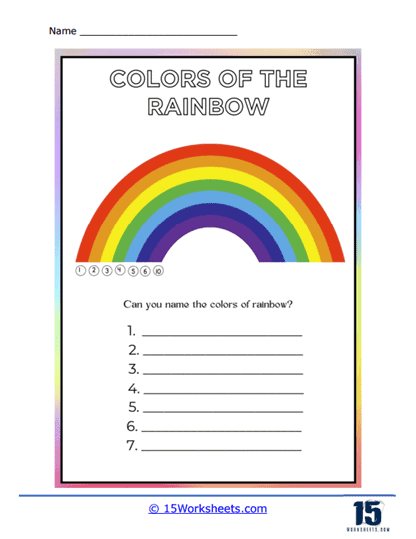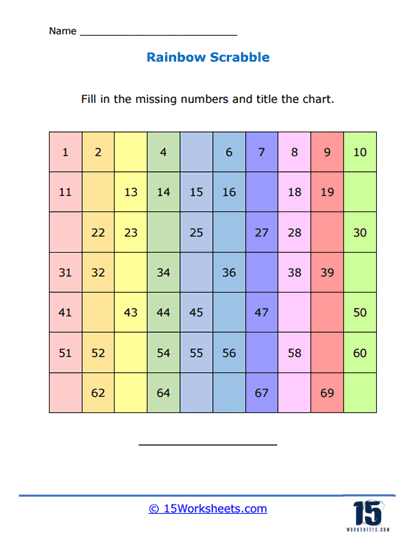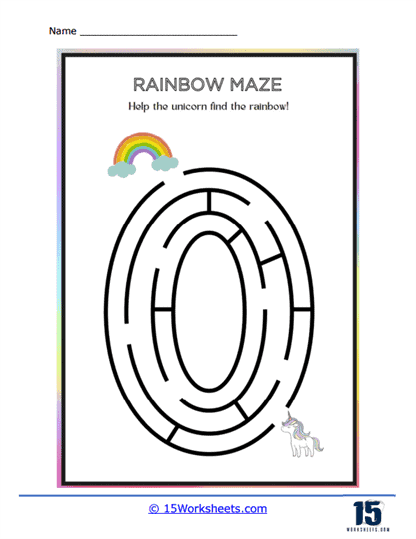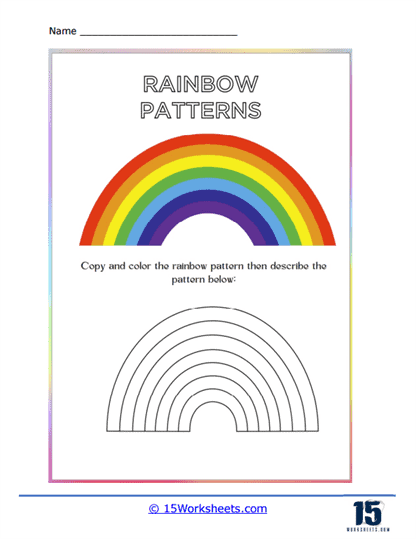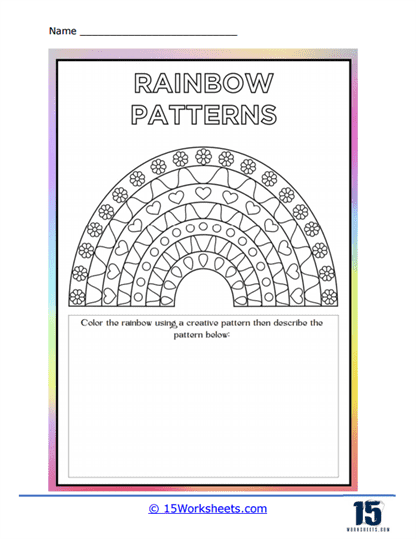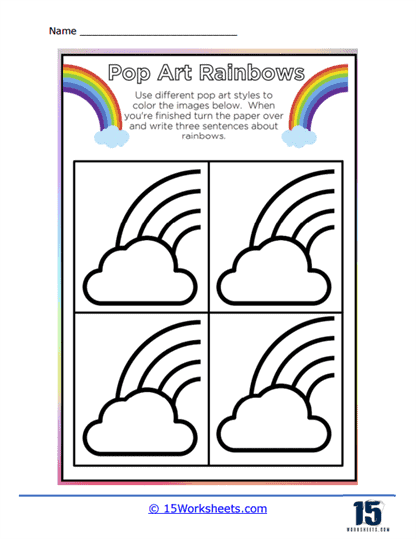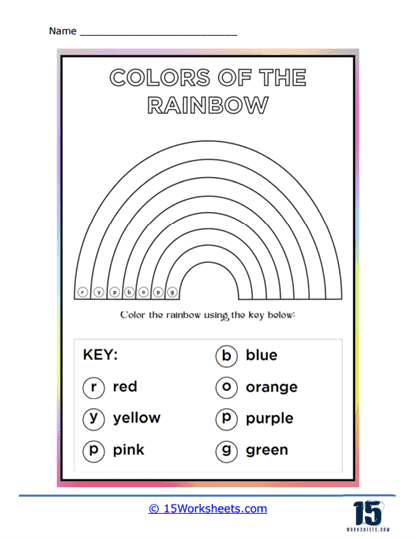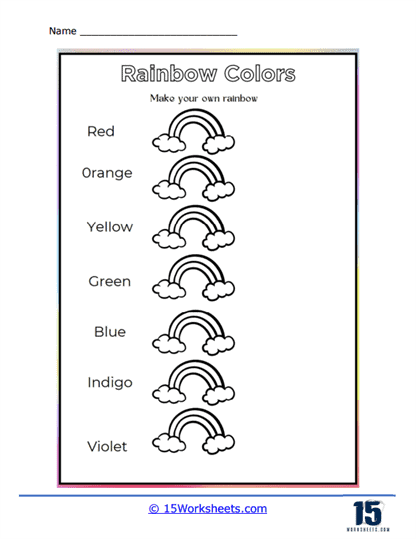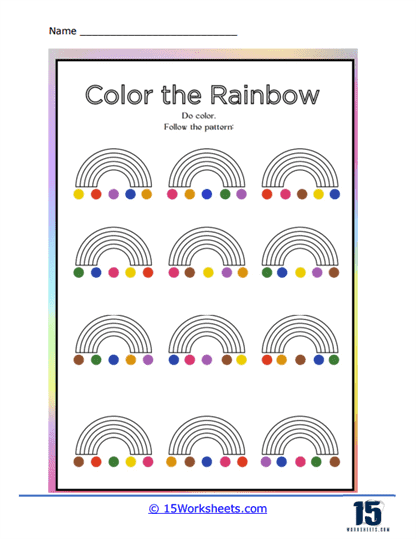Rainbows Worksheets
All About These 15 Worksheets
This captivating series of rainbow-themed worksheets for Kindergarten students is designed to spark curiosity and imagination in young learners. By harnessing the natural allure of rainbows, these worksheets invite children to explore the world of colors while simultaneously enhancing key developmental skills such as counting, language development, and artistic expression. Each activity has been carefully crafted to engage the minds of young learners in a way that feels fun and exciting, while also encouraging cognitive growth and creativity.
Through a diverse range of interactive exercises, children will not only develop a deeper understanding of colors but will also engage in critical thinking, problem-solving, and creative expression. These worksheets introduce students to concepts like color recognition, color mixing, numeracy, and vocabulary, all within the vibrant and familiar context of rainbows. Whether students are practicing their counting skills by tallying the number of rainbow illustrations or exploring the fascinating science of how rainbows are formed, each worksheet is an opportunity for growth and discovery.
For instance, students will practice counting in an imaginative and engaging way by working with fun, rainbow-themed pictures. This approach to numeracy helps children connect abstract concepts to concrete images, making counting more relatable and easier to understand. As they reinforce their numeracy skills through counting rainbows and rainbow-colored objects, children will find joy in learning, making mathematics less intimidating and more accessible at this early stage.
Fine motor skills are another critical focus of these worksheets. Through tracing exercises, children are encouraged to match rainbows of similar designs, an activity that hones hand-eye coordination and promotes the precision needed for writing. These tracing tasks also serve as an introduction to pattern recognition and visual discrimination, which are foundational for both literacy and numeracy development.
Coloring activities, meanwhile, offer a dual benefit. They foster creativity and imagination as students bring rainbow-themed illustrations to life, while also reinforcing their knowledge of colors and how they work together. By experimenting with different hues, young learners not only improve their artistic skills but also strengthen their understanding of color theory, such as the blending of primary colors to create secondary colors. This early exposure to the science of color mixing encourages curiosity about the natural world and provides a simple introduction to scientific concepts.
The worksheets also delve into number combinations, with students learning to identify which numbers add up to ten through a rainbow-themed approach. By making the connection between rainbows and math, children are better able to grasp these early arithmetic concepts in a playful and memorable way. These exercises develop critical problem-solving skills and strengthen their mathematical reasoning.
In addition to math and art, these worksheets incorporate language development through a variety of word-based activities. From word search puzzles filled with rainbow-related terms to sentence writing exercises where students describe rainbows in their own words, these activities promote vocabulary growth and language comprehension. By practicing descriptive language, students sharpen their ability to communicate and express ideas clearly, skills that are essential for academic success.
Students will also embark on a colorful maze adventure, where they navigate a path designed with a rainbow motif. This task encourages visual tracking and problem-solving, offering a fun challenge that exercises both the brain and the eyes. With every turn in the maze, students strengthen their spatial awareness and logical thinking, all while enjoying the process.
At the core of these activities is the joy of learning. Each worksheet has been designed not just to teach but to inspire wonder. Rainbows are more than just beautiful natural phenomena-they are gateways to learning about color, science, and the beauty of the world around us. As students practice writing sentences about rainbows, they are not only improving their language skills but also developing a sense of wonder and appreciation for the magic of nature.
How Do Rainbows Form?
Rainbows are one of nature’s most mesmerizing displays, captivating people across cultures and generations. They seem almost magical, appearing unexpectedly after a rainstorm, but their formation is rooted in a fascinating interaction between sunlight and water. Understanding how rainbows form can deepen our appreciation of this natural spectacle, blending the beauty of color with the precision of science.
Rainbows occur when sunlight meets raindrops in just the right conditions. Imagine a sunny day with rain falling in the distance; this combination holds the potential for the creation of a rainbow. However, seeing one requires more than just rain and sun. The position of the observer is crucial-only those standing in the right place, with their back to the sun and rain in front of them, will witness the colorful arc stretch across the sky.
To understand why rainbows appear, we must first look at sunlight itself. Although sunlight appears white or yellowish to our eyes, it’s actually made up of a spectrum of colors: red, orange, yellow, green, blue, indigo, and violet. These colors are usually blended together, making it impossible to distinguish them with the naked eye. But when sunlight enters a raindrop, something incredible happens. Each raindrop acts like a tiny prism, bending the sunlight at different angles and separating it into its individual colors. This process, known as refraction, is the first step in the creation of a rainbow.
As the light continues its journey through the raindrop, it reflects off the inside surface of the droplet and exits, still divided into its component colors. This reflection and refraction are what cause the sunlight to scatter into the brilliant spectrum we associate with rainbows. The angle at which the light is bent determines the colors’ order, with red appearing on the outer edge of the arc and violet on the inner edge.
But there’s more to it than just the physics. What makes rainbows truly special is their fleeting, elusive nature. They require perfect timing and the right atmospheric conditions, which makes witnessing one feel like a personal gift from nature. The sun must be low in the sky-early mornings or late afternoons provide the best chances for spotting rainbows. When the conditions align, sunlight and raindrops collaborate to produce one of the most beautiful sights in the natural world.
So, the next time you see a rainbow, you’ll know that it’s not just a random occurrence. It’s a result of sunlight, rain, and physics working together, with you standing at just the right angle to enjoy the show. Beyond its scientific explanation, a rainbow reminds us of the beauty that can arise from the combination of light and water-a symbol of hope and wonder arching across the sky.

